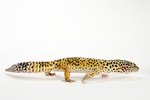Things You'll Need
Water
Bleach
Crickets
Fruit flies
Praying mantis habitat
Spray water bottle
A praying mantis makes a great pet that is easy to care for in captivity. These large insects also make excellent additions to the science classroom. They easily acclimate to being handled by humans, are quite interesting to watch, especially when eating and breed well in captivity. Whether you are keeping a praying mantis for a pet or to teach children, there are a few simple steps you need to follow to keep a praying mantis healthy and happy.

Place the praying mantis in an appropriate habitat. Be sure to provide plants and sticks for the mantis to climb on in the habitat.
Keep a dish filled with a little water in the habitat. The praying mantis may or may not drink from it, but it will provide water when needed.
Feed the mantis live insects. A baby mantis will feed on fruit flies that you can purchase in a pet store. Adults can live on crickets, but you should provide some variety to the diet of your pet in order to keep it healthy.
Feed a baby praying mantis fresh food daily. Adults should eat twice a week. Remove any food that is not eaten after the insect is done with its meal.
Watch the praying mantis to see when it sheds its exoskeleton. Remove the exoskeleton when the shedding is over.
Mist the habitat with water on a weekly basis. This provides humidity for the insect.
Clean the habitat weekly. To do this, place the praying mantis in a safe container and wash out the habitat using a solution that is 3 percent bleach, 97 percent water. Rinse the tank thoroughly to remove any bleach.
Tips
Be sure that the habitat is three times the size of the praying mantis. This will provide enough room for the insect to shed its skin. Purchase a bigger habitat as the praying mantis grows. Handle the praying mantis frequently. They adjust well to human contact.
Warnings
Never place a praying mantis in a habitat with another pet insect, including another mantis. The praying mantis will eat its companions. Never leave the praying mantis in an uncovered container. They will crawl or fly away and they are quite fast.
Photo Credits
-
B~, www.everystockphoto.com; Trevor Henry, www.stockvault.net;
Writer Bio
Nicole Harms has been writing professionally since 2006, specializing in real estate, finance and travel. When she's not writing, she enjoys traveling and has visited several countries, including Israel, Spain, France and Guam. Harms received a Bachelor of Science in Education from Maranatha Baptist Bible College.



